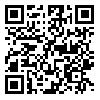1. Teixeira AL, Salem H, Frey BN, Barbosa IG, Machado-Vieira R. Update on bipolar disorder biomarker candidates. Expert Rev Mol Diagn. 2016;16(11):1209–20. [
DOI]
2. Vadnie CA, McClung CA. Circadian rhythm disturbances in mood disorders: insights into the role of the suprachiasmatic nucleus. Neural Plasticity. 2017;2017:1–28. [
DOI]
3. Landgraf D, Long JE, Proulx CD, Barandas R, Malinow R, Welsh DK. Genetic disruption of circadian rhythms in the suprachiasmatic nucleus causes helplessness, behavioral despair, and anxiety-like behavior in mice. Biol Psychiatry. 2016;80(11):827–35. [
DOI]
4. Chambe J, Reynaud E, Maruani J, Fraih E, Geoffroy PA, Bourgin P. Light therapy in insomnia disorder: a systematic review and meta‐analysis. J Sleep Res. 2023;32(6):e13895. [
DOI]
5. De Souza CM, Carissimi A, Costa D, Francisco AP, Medeiros MS, Ilgenfritz CA, et al. The mood rhythm instrument: development and preliminary report. Rev Bras Psiquiatr. 2016;38(2):148–53. [
DOI]
6. Logan RW, Edgar N, Gillman AG, Hoffman D, Zhu X, McClung CA. Chronic stress induces brain region-specific alterations of molecular rhythms that correlate with depression-like behavior in mice. Biol Psychiatry. 2015;78(4):249–58. [
DOI]
7. Chen Y, Hong W, Fang Y. Role of biological rhythm dysfunction in the development and management of bipolar disorders: a review. Gen Psychiatr. 2020;33(1):e100127. [
DOI]
8. Fabbri M, Beracci A, Martoni M, Meneo D, Tonetti L, Natale V. Measuring subjective sleep quality: a review. Int J Environ Res Public Health. 2021;18(3):1082. [
DOI]
9. Silva EDSME, Ono BHVS, Souza JC. Sleep and immunity in times of COVID-19. Rev Assoc Med Bras. 2020;66(suppl 2):143–7. [
DOI]
10. Rubiño JA, Gamundí A, Akaarir M, Canellas F, Rial R, Nicolau MC. Bright light therapy and circadian cycles in institutionalized elders. Front Neurosci. 2020;14:359. [
DOI]
11. Lange T, Dimitrov S, Born J. Effects of sleep and circadian rhythm on the human immune system. Ann N Y Acad Sci. 2010;1193(1):48–59. [
DOI]
12. Ahmad M, Md. Din NSB, Tharumalay RD, Che Din N, Ibrahim N, Amit N, et al. The effects of circadian rhythm disruption on mental health and physiological responses among shift workers and general population. Int J Environ Res Public Health. 2020;17(19):7156. [
DOI]
13. Meers JM, Nowakowski S. Sleep, premenstrual mood disorder, and women's health. Curr Opin Psychol. 2020;34:43–9. [
DOI]
14. Bauducco S, Richardson C, Gradisar M. Chronotype, circadian rhythms and mood. Curr Opin Psychol. 2020;34:77–83. [
DOI]
15. Gorgol J, Waleriańczyk W, Randler C. Exploring the associations between the Morningness-Eveningness-Stability-Scale improved (MESSi) and the higher-order personality factors. Chronobiol Int. 2023;40(6):812–23. [
DOI]
16. Gorgol J, Waleriańczyk W, Stolarski M. The moderating role of personality traits in the relationship between chronotype and depressive symptoms. Chronobiol Int. 2022;39(1):106–16. [
DOI]
17. Wirz-Justice A. Chronobiology and mood disorders. Dialogues Clin Neurosci. 2003;5(4):315–25. [
DOI]
18. Zou H, Zhou H, Yan R, Yao Z, Lu Q. Chronotype, circadian rhythm, and psychiatric disorders: Recent evidence and potential mechanisms. Front Neurosci. 2022;16:811771. [
DOI]
19. McCarthy MJ, Gottlieb JF, Gonzalez R, McClung CA, Alloy LB, Cain S, et al. Neurobiological and behavioral mechanisms of circadian rhythm disruption in bipolar disorder: A critical multi‐disciplinary literature review and agenda for future research from the ISBD task force on chronobiology. Bipolar Disorders. 2022;24(3):232–63. [
DOI]
20. Knežević G, Lazarević LB, Montag C, Davis K. Relations between lexical and biological perspectives on personality: new evidence based on hexaco and affective neuroscience theory. J Pers Assess. 2020;102(3):325–36. [
DOI]
21. Milić J, Milić Vranješ I, Krajina I, Heffer M, Škrlec I. Circadian typology and personality dimensions of croatian students of health-related university majors. Int J Environ Res Public Health. 2020;17(13):4794. [
DOI]
22. Lipnevich AA, Credè M, Hahn E, Spinath FM, Roberts RD, Preckel F. How distinctive are morningness and eveningness from the Big Five factors of personality? a meta-analytic investigation. J Pers Soc Psychol. 2017;112(3):491–509. [
DOI]
23. Adan A, Lachica J, Caci H, Natale V. Circadian typology and temperament and character personality dimensions. Chronobiol Int. 2010;27(1):181–93. [
DOI]
24. Amiri S, Isazadegan A. Assessment of affect and brain-behavioral systems based on cycle of morningness and eveningness. Contemporary Psychology. 2016;10(2):101–12. [Persian] [
Article]
25. Mirshamsi Z, Khoshsorour S. Comparing the five-factor model of personality in students with morningness - eveningness rhythms. Journal of Pediatric Nursing. 2019;5(2):14–21. [Persian] [
Article]
26. Díaz-Morales JF. Morning and evening-types: exploring their personality styles. Pers Individ Dif. 2007;43(4):769–78. [
DOI]
27. Maestripieri D. Night owl women are similar to men in their relationship orientation, risk-taking propensities, and cortisol levels: implications for the adaptive significance and evolution of eveningness. Evol Psychol. 2014;12(1):147470491401200. [
DOI]
28. Kline RB. Principles and practice of structural equation modeling. Guilford Press; 2023.
29. Oliveira MAB, Epifano K, Mathur S, Carvalho FG, Scop M, Carissimi A, et al. Validation of the english version of the mood rhythm instrument. BMC Psychol. 2020;8(1):35. [
DOI]
30. Aslani S, Khademi A, Etemadinia M. The validation of the Persian version of the revised mood rhythm instrument (MRhI). Rooyesh. 2023;12(6):111–20. [Persian] [
Article]
31. Ashton MC, Lee K, Perugini M, Szarota P, De Vries RE, Di Blas L, Boies K, De Raad B. A six-factor structure of personality-descriptive adjectives: solutions from psycholexical studies in seven languages. J Pers Soc Psychol. 2004;86(2):356. [
DOI]
32. Lee K, Ashton MC. Psychometric properties of the HEXACO-100. Assessment. 2018;25(5):543–56. [
DOI]
33. Karimi H, Minaii A. Psychcometric Properties and factor structure of Hexaco personality inventory and comparison the relation whith five main factors of personality between woman and man students in Tehran. Psychometry. 2017;6(22):43–58. [Persian] [
Article]

 ، علی خادمی*2
، علی خادمی*2 
 ، مهین اعتمادینیا3
، مهین اعتمادینیا3 




